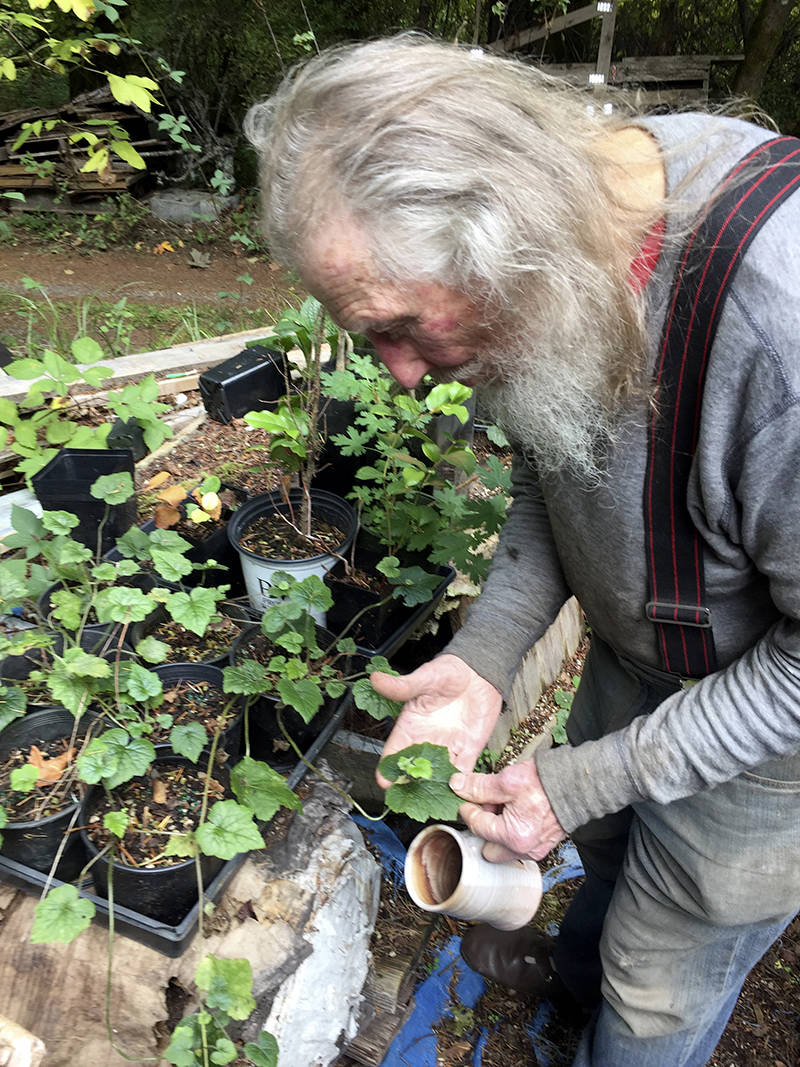John Browne
Many on Vashon know John Browne as a musician, mayoral candidate and community advocate, but it’s his life’s work with native plants that roots him to our island.
Browne’s mother and grandmother were gardeners, and what he calls “closet ecologists,” who first taught him to notice plants and flowers. His awakening to native species came in the early 1970s as he was planting trees on Forest Service land along the Oregon coast.
In the early 80s, Browne visited his father on Vashon, met his future wife Vicki, and began taking ecology courses through King County with his friend Terry Sullivan. They soon realized that no one was specializing in native plants on Vashon, so they started Judd Creek Nursery.
“As a business, it was probably the easiest thing to finance. We had a pretty good palette of plants here on the island to start from seeds and cuttings,” he said. “We recycled nursery pots and gathered side-cast trimmings from the of sides of the roads to make compost. It was a low-hanging fruit kind of a business that appealed to a couple of hippies.”
They started with 15 native species including deer fern, salal and low Oregon grape. Vicki used their stock in her landscaping jobs.
In the late 90s, John and Vicki Browne took over the Vashon-Maury Island Land Trust’s native plant sale. They started bulk buying from wholesalers and established an earlier pickup date to better coordinate with growers up north who have to harvest their stock in the brief window between dormancy and the first snowfall.
Browne sees his experience with native plants as “a great education about looking at the world.” It has connected him to indigenous people who are attempting to blend traditional diets with modern food options, to the birds that feed on the plants, and to wildlife such as salmon and orcas that depend on native species to keep streams clean and free-flowing.
Browne says he’s not a purist when it comes to native plants. He has grown more than 130 different species and notes that we should broaden our scope to consider species that will adapt to climate change and Vashon’s varied microclimates when looking for native plants to fill our landscape.
“Western Wahoo (Euonymus occidentalis), for example, is a plant native to the Pacific Northwest usually found south of here that is making its way north,” says Browne. Other natives, such as Garry Oak, may not be able to make the transition without human intervention to carry its much larger seeds. Browne suggests that we look south to see what other native plants might be able to adapt here with our help.
Twenty-five years after starting Judd Creek Nursery, Browne still lives, works and experiments with native plants on a piece of land he lovingly calls Hippie Dogpatch. He also uses his encyclopedic knowledge to help his stepson, Devin Sullivan, with his wholesale business, Dirty Pretty Nursery, near Lisabeula.
Next week, Browne will share some of that knowledge at a panel discussion sponsored by Vashon Audubon in conjunction with the Land Trust (please see Field Notes Calendar for details). The discussion will be moderated by Land Trust Executive Director Tom Dean and joined by Melissa Schafer, who specializes in landscape design using native plants and Master Gardener and Vashon Audubon Vice President, Scott Anderson.
Mushroom season
This is the season when the rains come down and the mushrooms come up. What we commonly call mushrooms are the fruiting bodies of the fungal mycelium that forms a web across the forest floor. Since it’s important to observe mushrooms closely, and carefully, Stacey Hinden, executive director of the Vashon Wilderness Program offers some basic advice to follow when looking for mushrooms:
DOs:
• Do use at least two field guides to positively confirm your identification.
• Do take your time to methodically check the mushroom’s features — what do you see and smell.
• Do practice sustainable harvesting — collect only a 1/4 of the mushrooms you find, leaving plenty for the animals that eat them and allowing the mushrooms a chance to reproduce.
DON’Ts:
• Don’t assume that if another animal can eat it (including other humans) that it is safe for you to do so.
• Don’t use other people’s anecdotal tales to identify an edible mushroom.
• Don’t let fear prevent you from exploring the fascinating world of wild edible mushrooms.


